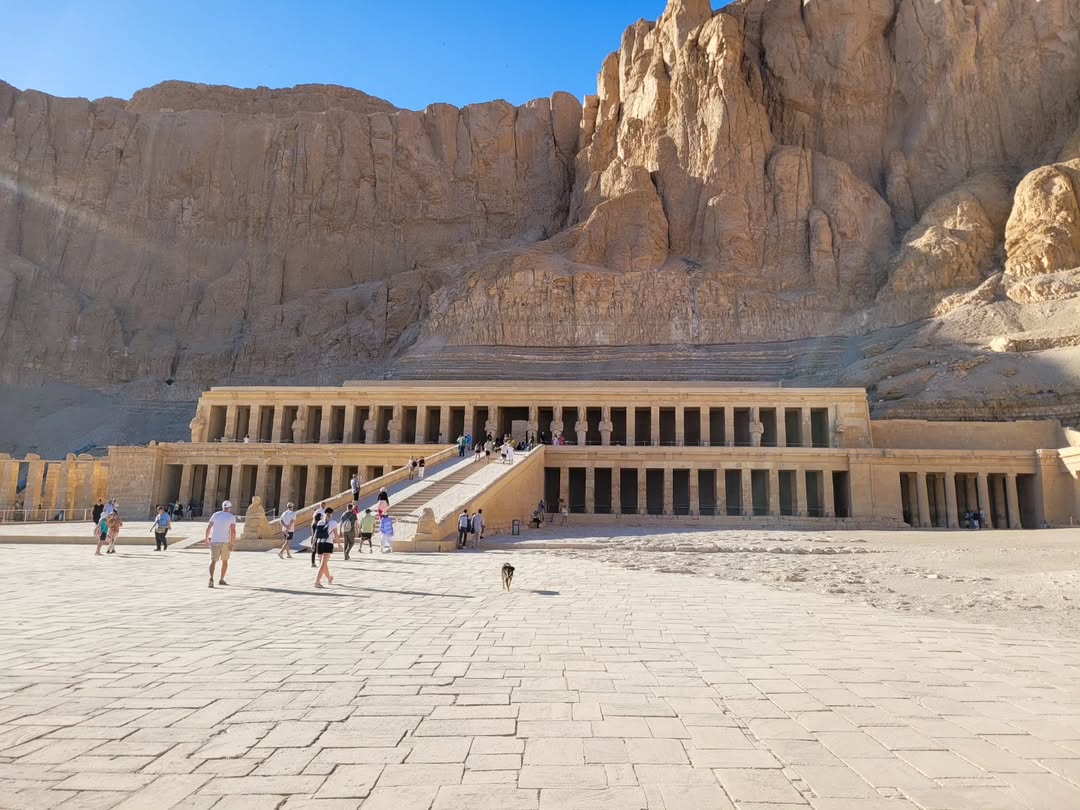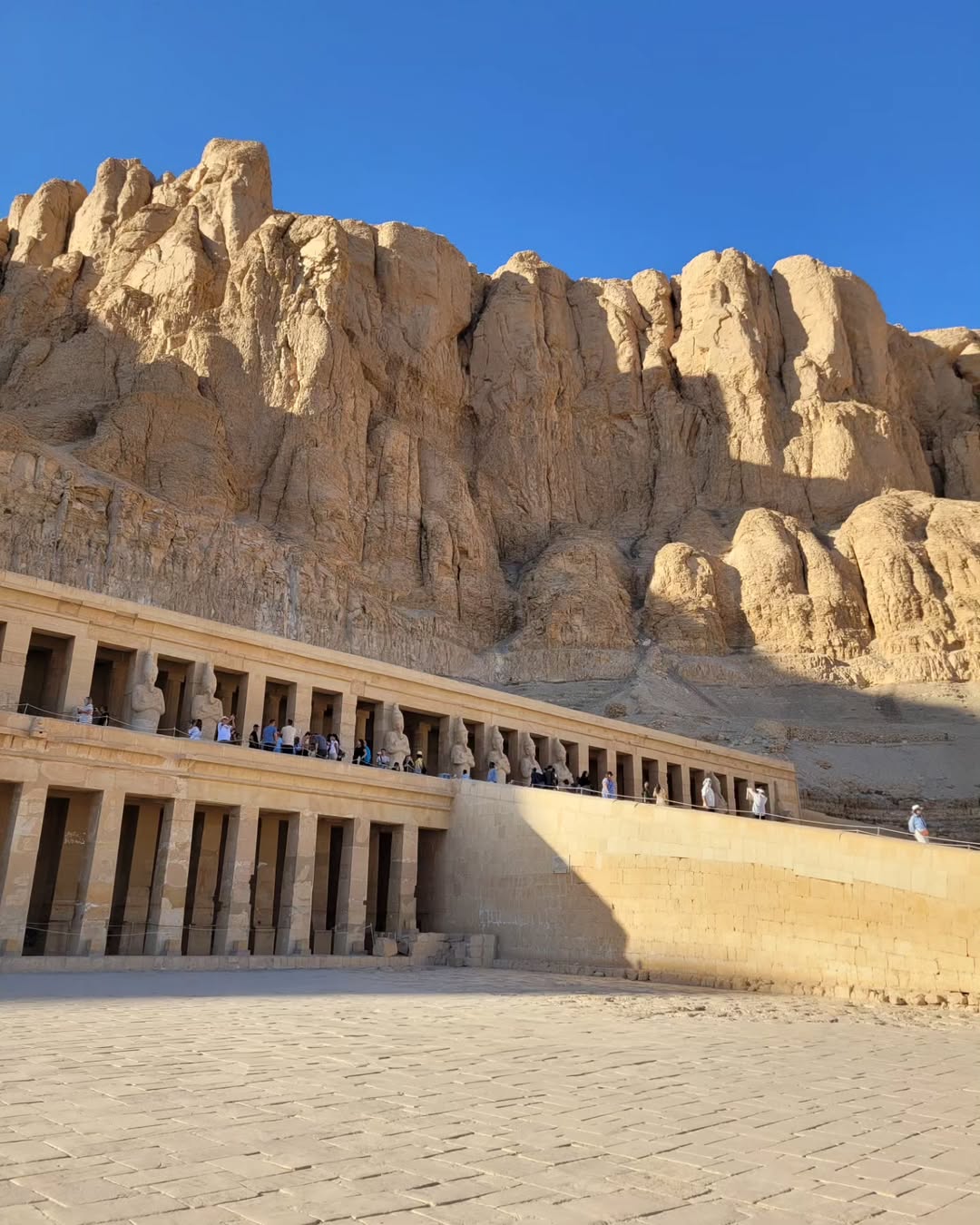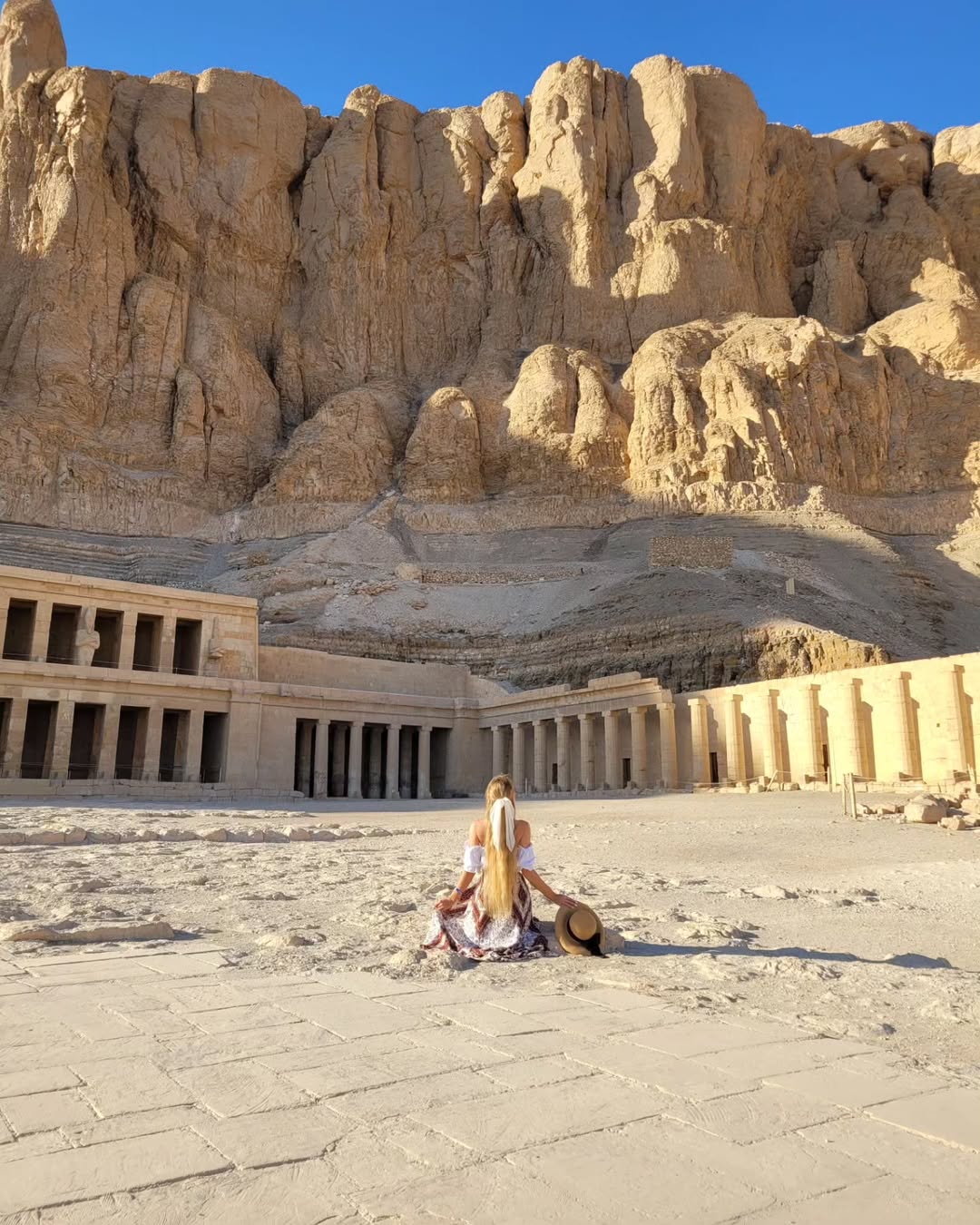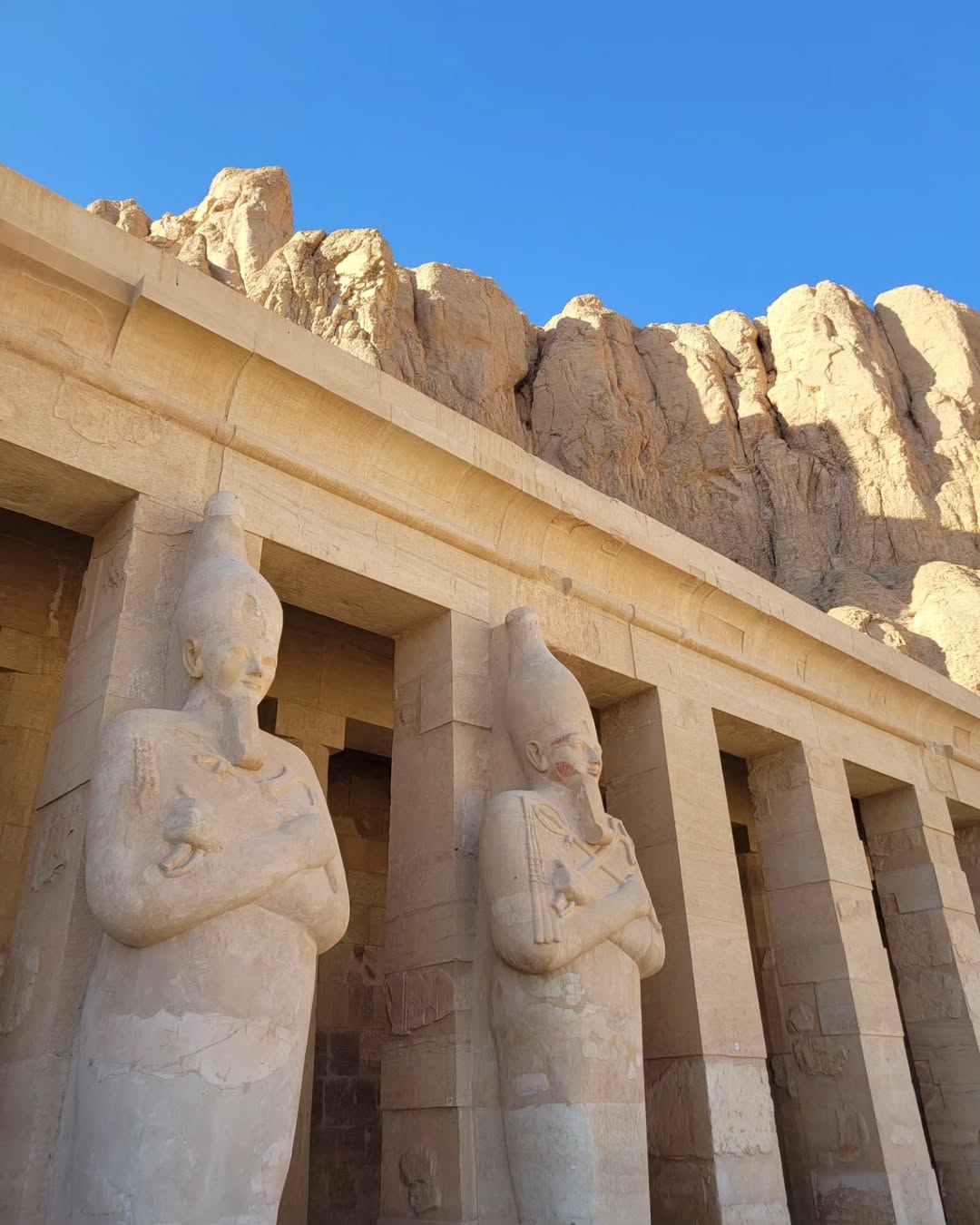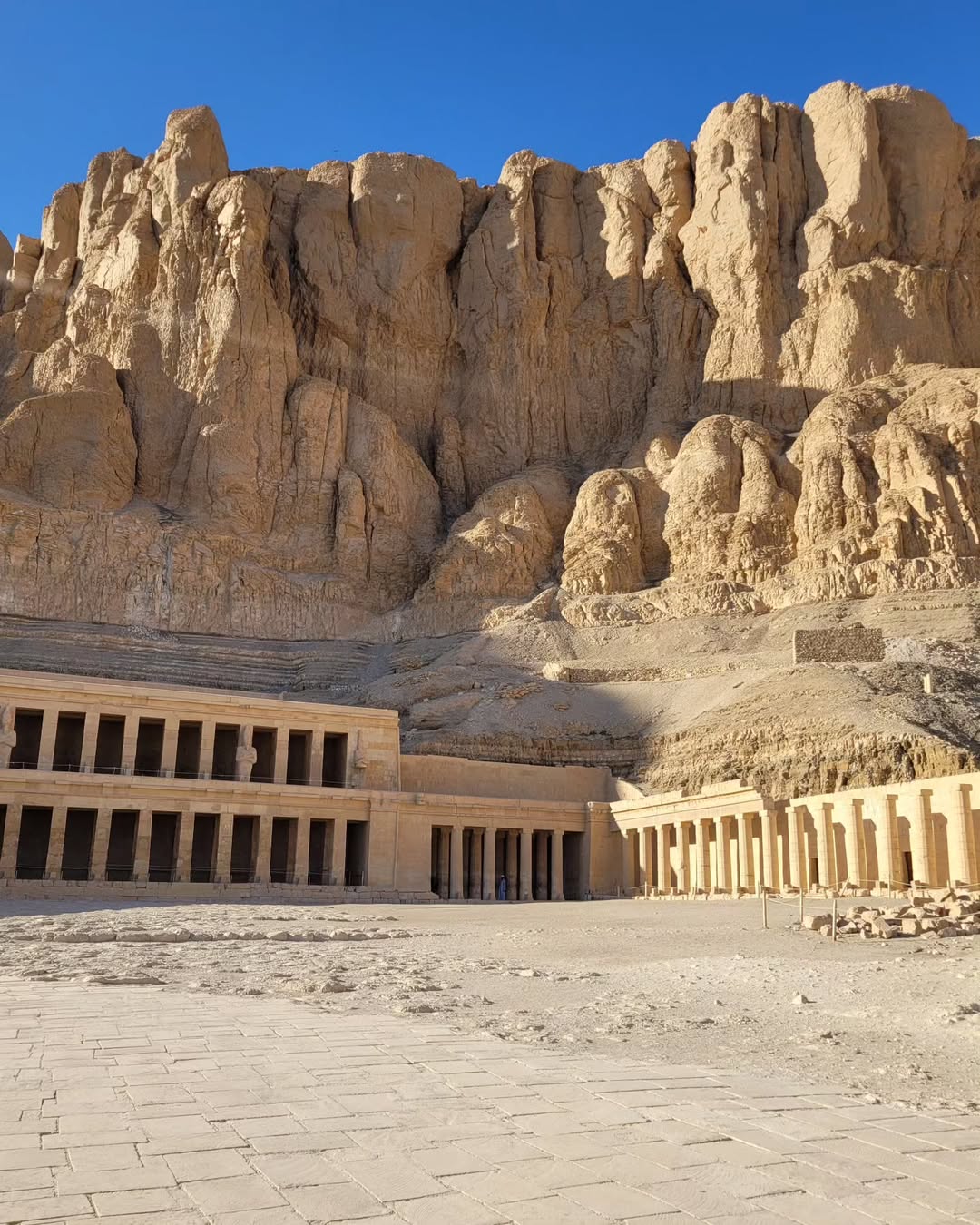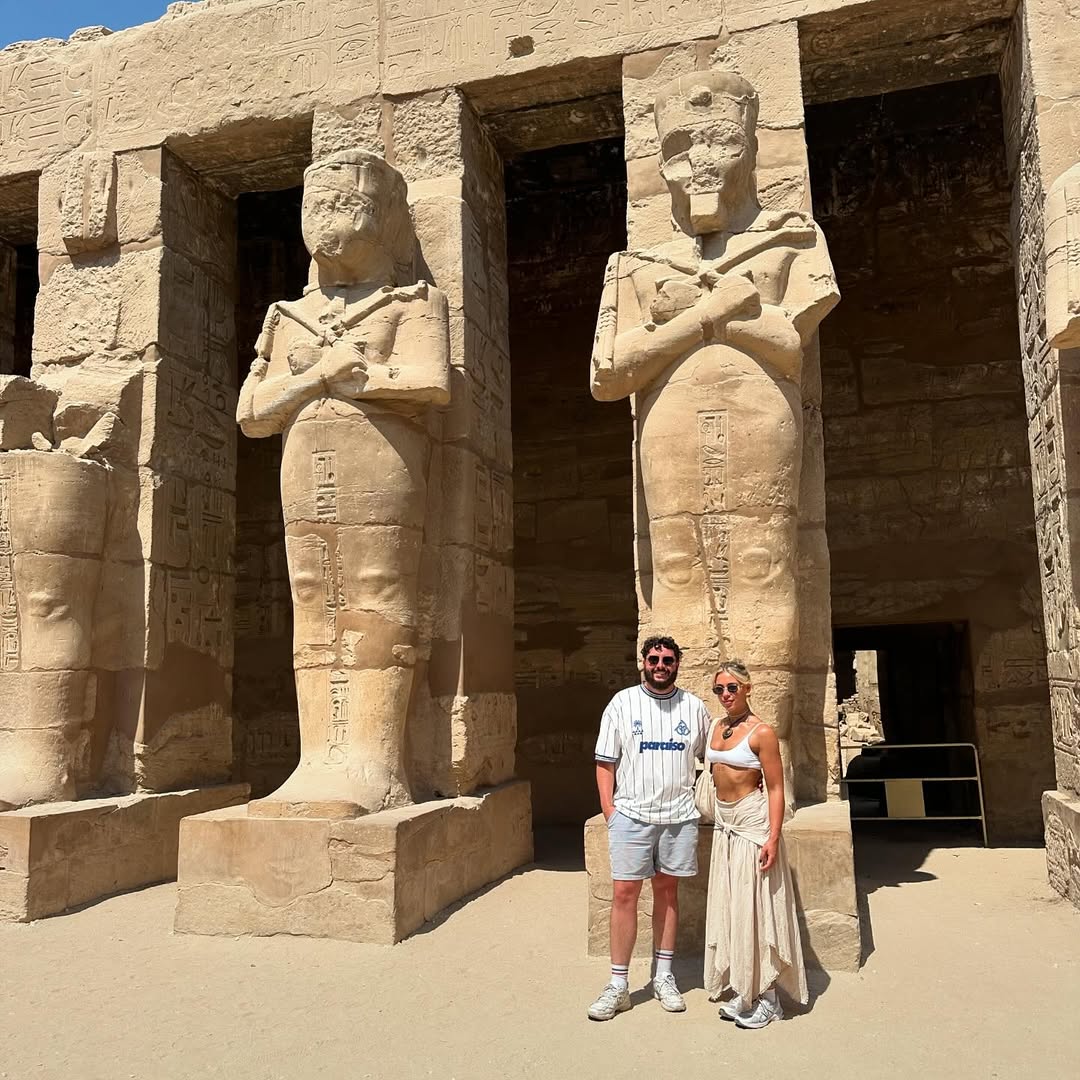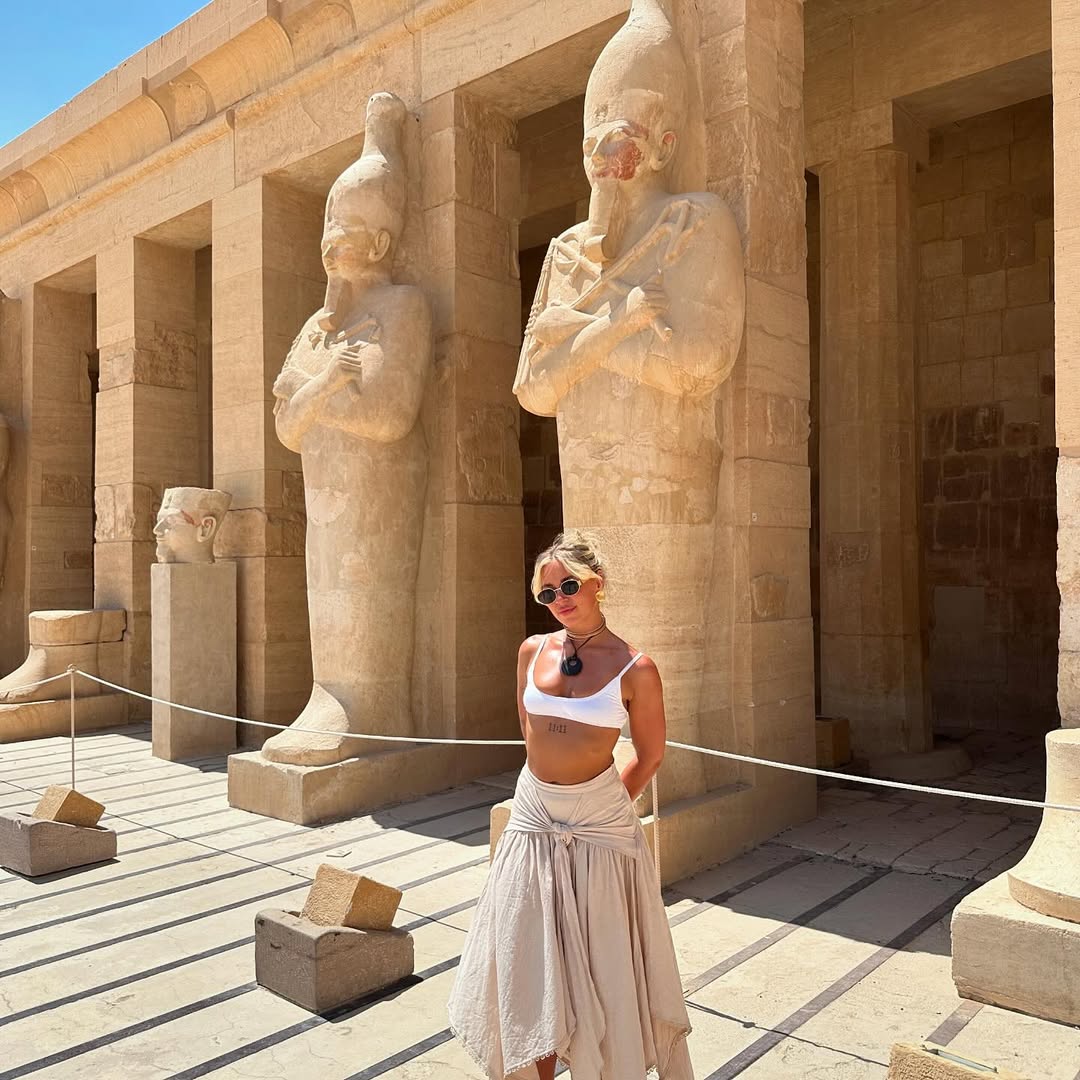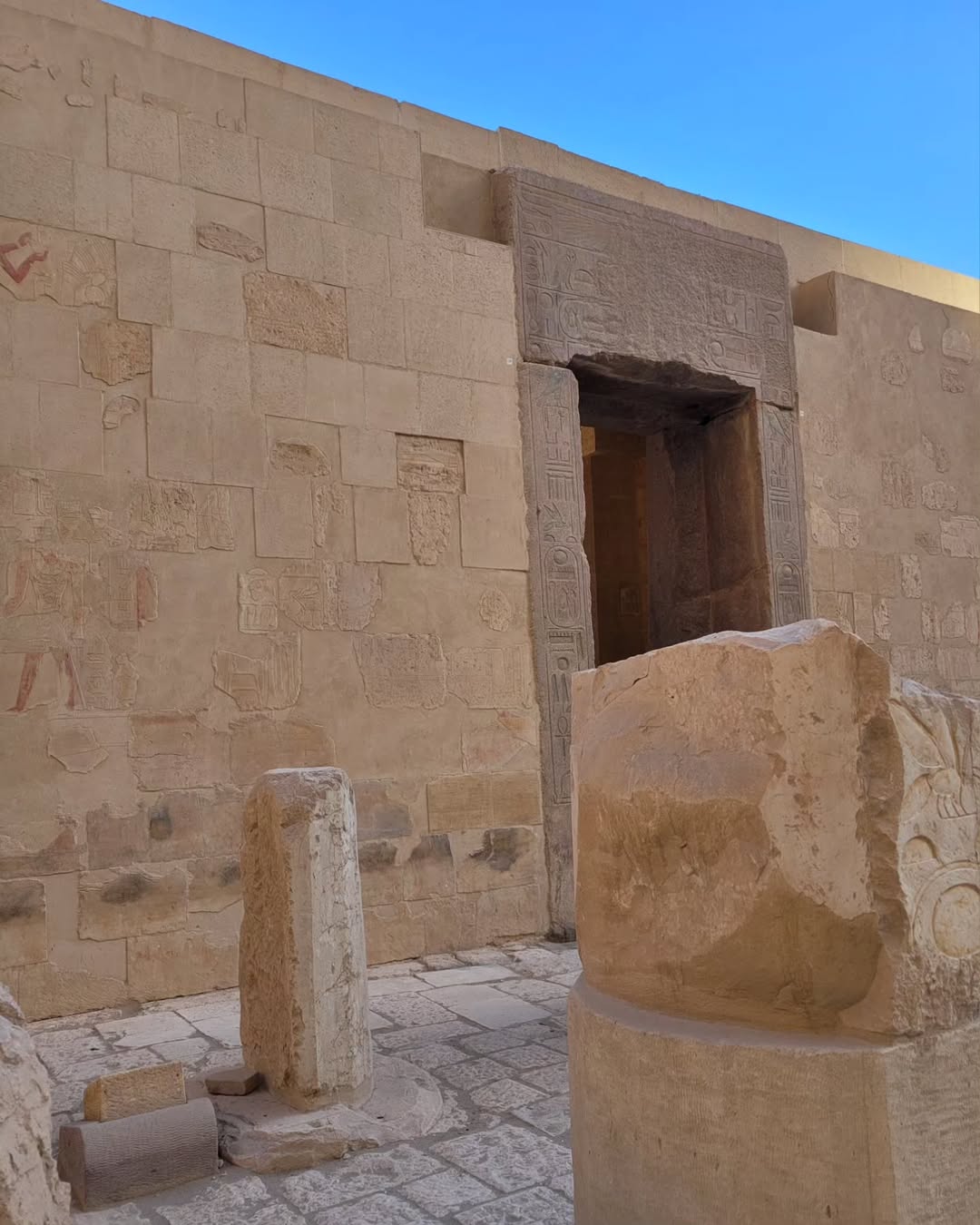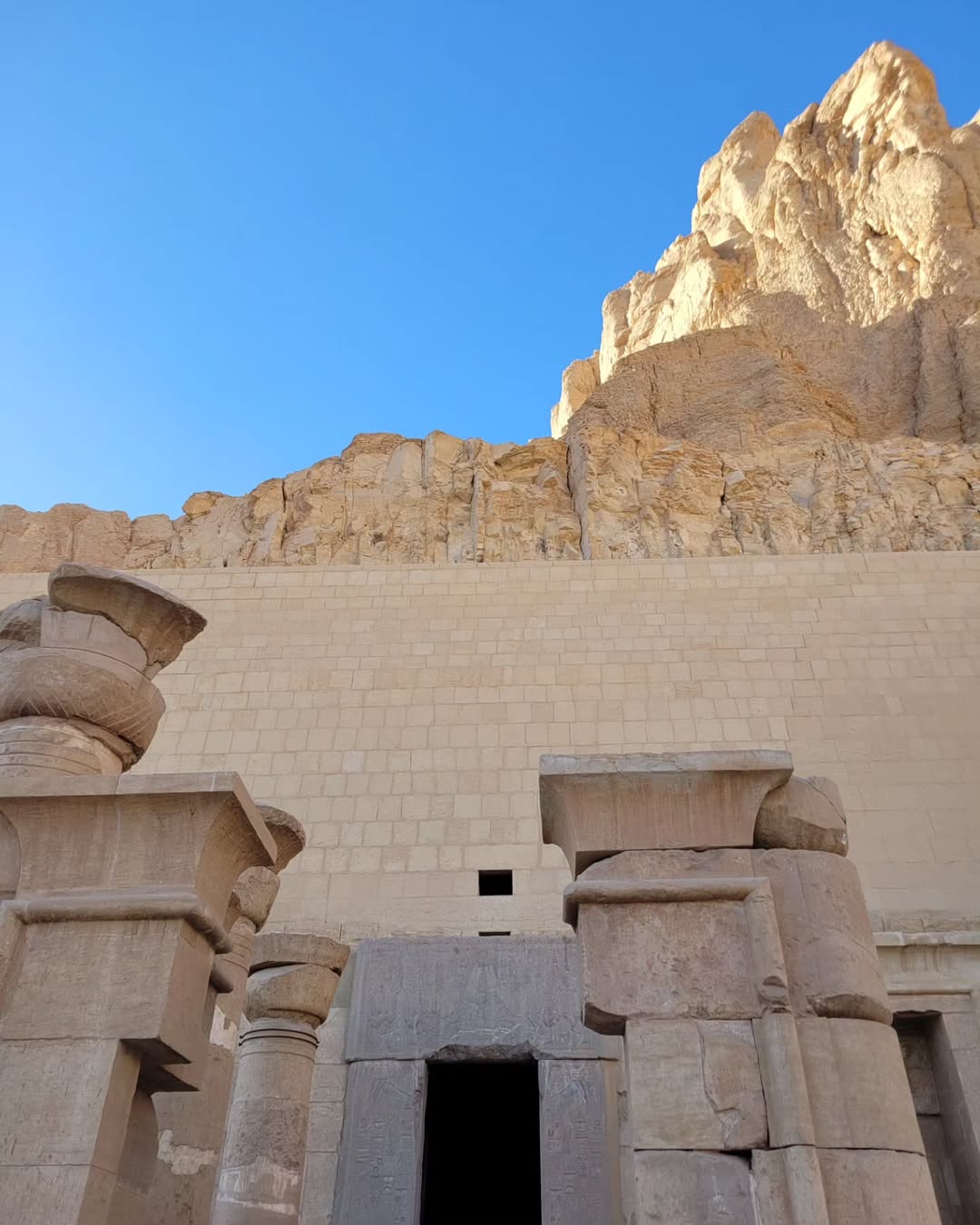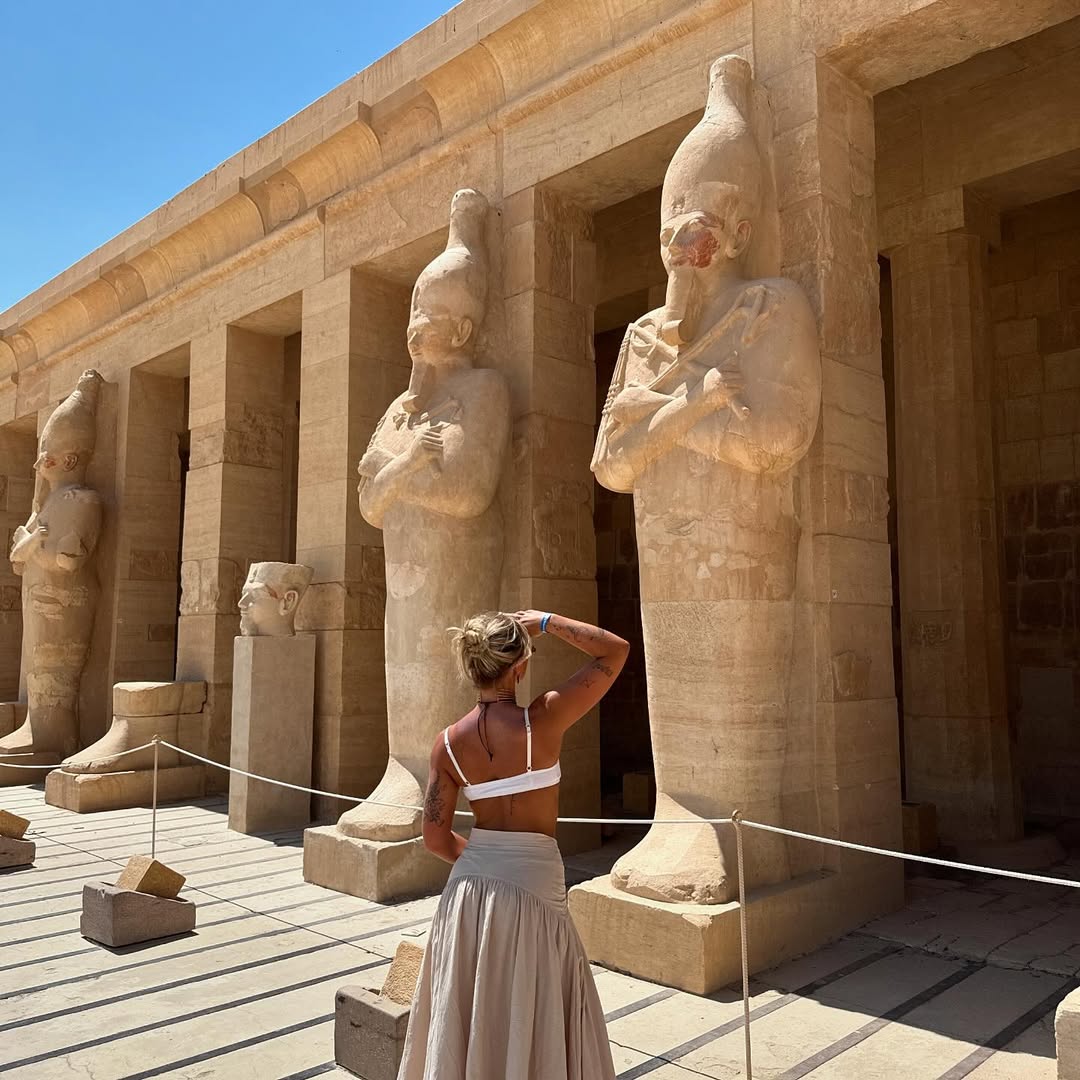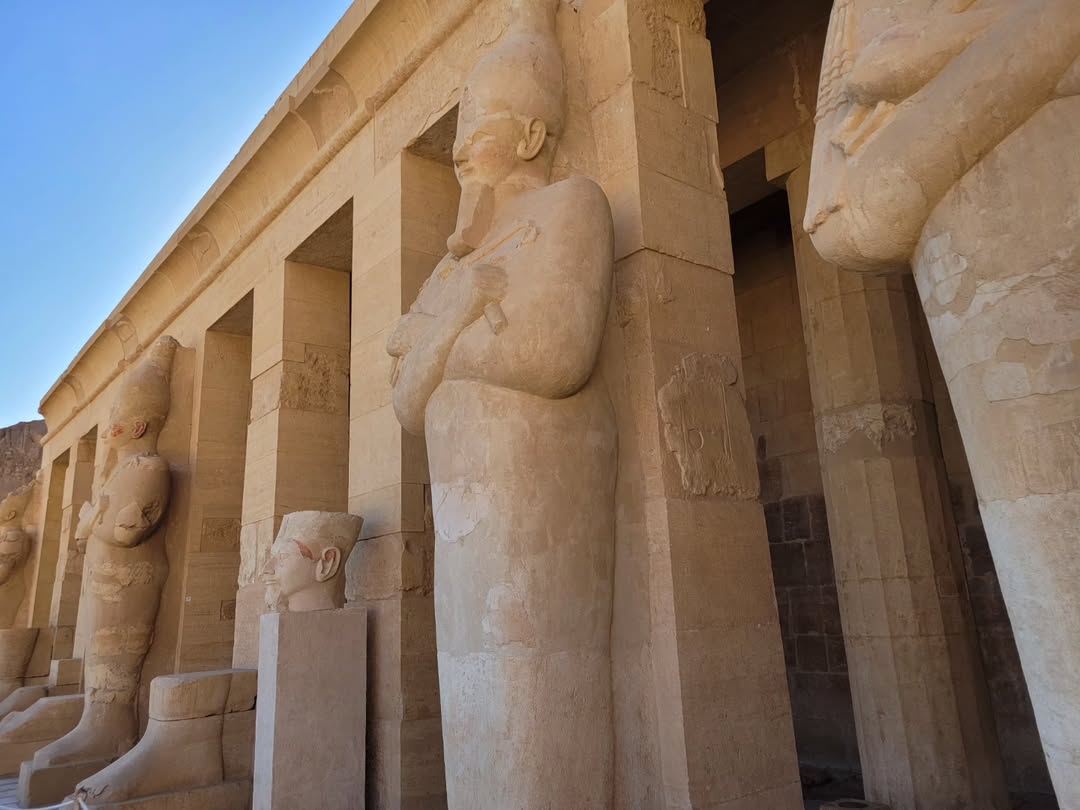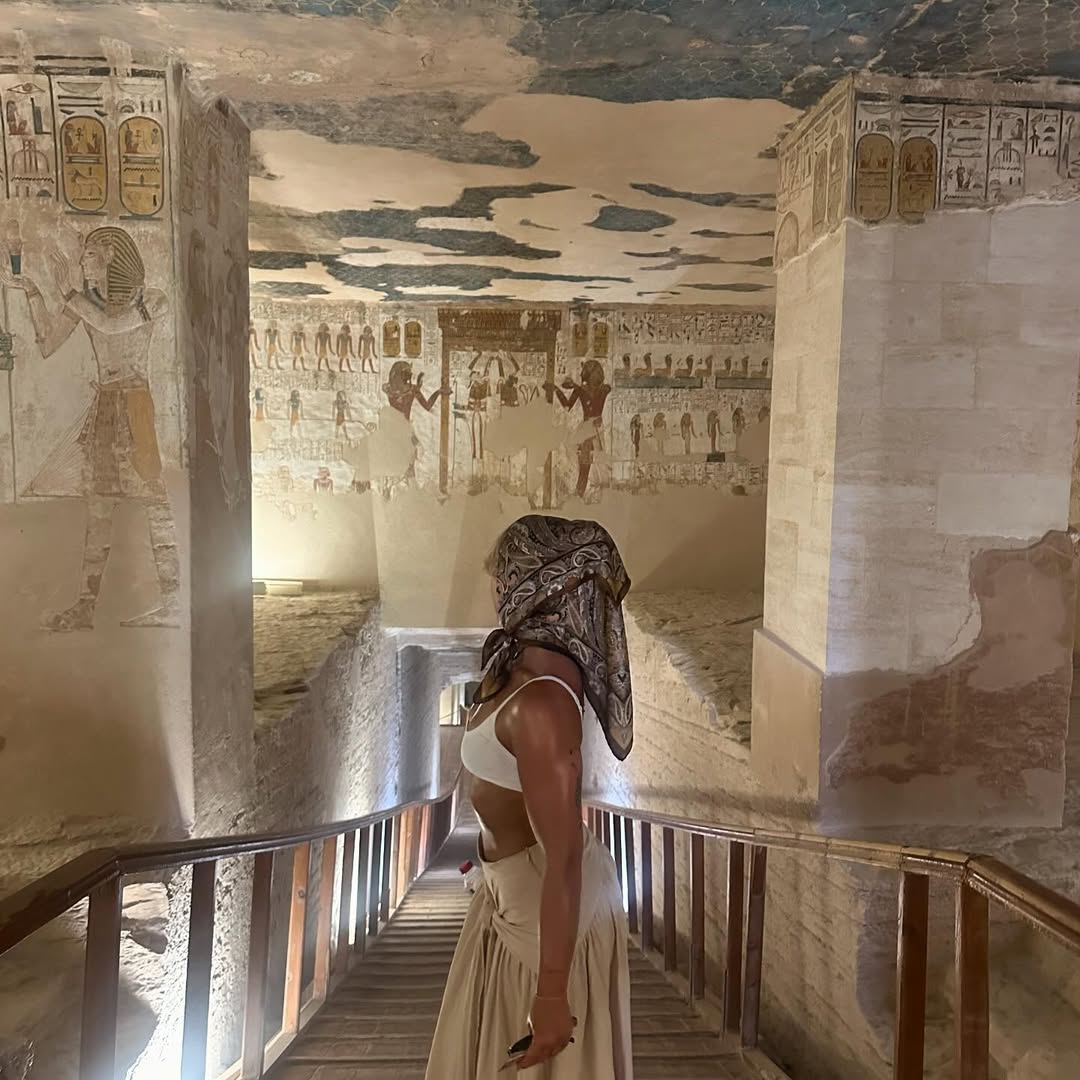Hatshepsut (Deir el-Bahari Temple)
Hatshepsut at Deir el-Bahari: A Masterpiece of Ancient Egyptian Architecture
Introduction: A Revolutionary Monument of the New Kingdom
Carved dramatically into the limestone cliffs of Deir el-Bahari on Luxor’s West Bank, the Mortuary Temple of Hatshepsut (known as Djeser-Djeseru, “Holy of Holies”) stands as one of ancient Egypt’s most extraordinary architectural achievements. Built for the famed female pharaoh Hatshepsut (1479-1458 BCE) of the 18th Dynasty, this terraced complex represents:
-
A bold departure from traditional temple design
-
A political statement of royal power
-
A harmonious blend of architecture and natural landscape
-
One of Egypt’s best-preserved New Kingdom temples
Historical Context: Hatshepsut’s Remarkable Reign
Hatshepsut’s temple reflects her unprecedented position as Egypt’s most successful female ruler:
-
Ruled as regent for Thutmose III before declaring herself pharaoh
-
Commissioned ambitious building projects throughout Egypt
-
Established lucrative trade networks, including the famous Punt expedition
-
Presented herself as a male king in official artwork
-
Reigned peacefully for about 22 years during Egypt’s golden age
Architectural Brilliance: Design and Layout
Designed by royal architect Senenmut, the temple features three majestic colonnaded terraces rising 30 meters (100 feet) against the cliffs:
1. Lower Terrace:
-
Original garden with exotic trees from Punt
-
Remains of the first colonnade
-
T-shaped basin for the sacred barque
2. Middle Terrace:
-
Birth Colonnade (north): Depicts Hatshepsut’s divine birth
-
Punt Colonnade (south): Shows the famous trading expedition
-
Chapel of Hathor: With Hathor-headed columns
3. Upper Terrace:
-
Central sanctuary dedicated to Amun-Re
-
Solar court with altar
-
Chapels for Anubis and royal cult
Key Architectural Features:
-
Perfect symmetry along a central axis
-
Ramps instead of staircases
-
200+ statues originally adorned the terraces
-
Integration with the natural rock face
-
Use of light and shadow for dramatic effect
Notable Reliefs and Artistic Elements
The temple walls preserve some of ancient Egypt’s finest bas-reliefs:
1. Divine Birth Scenes:
-
Shows Amun fathering Hatshepsut with Queen Ahmose
-
Legitimizes her claim to the throne
2. Expedition to Punt:
-
Detailed depictions of African landscapes
-
Shows exchange of goods like myrrh trees
-
Includes the famous obese Queen of Punt
3. Religious Scenes:
-
Offerings to Amun and other gods
-
Coronation ceremonies
-
Ritual processions
Later History and Rediscovery
The temple’s post-New Kingdom history includes:
-
Ancient Damage: Thutmose III’s attempted erasure of Hatshepsut’s memory
-
Coptic Use: Served as a Christian monastery (Deir el-Bahari = “Northern Monastery”)
-
Modern Archaeology: Excavated by Édouard Naville (1891-1897) and Herbert Winlock (1920s)
-
Restoration: Extensive Polish-Egyptian conservation since 1961
Visitor Experience: What to See Today
Must-View Elements:
-
The reconstructed colonnades and terraces
-
Well-preserved painted reliefs
-
Hathor Chapel with its unique columns
-
Remains of the original sphinx avenue
-
Panoramic views of the Nile Valley
Practical Information:
-
Best Time to Visit: Early morning or late afternoon
-
Photography: Allowed (some areas may restrict flash)
-
Nearby Sites: Valley of the Kings, Ramesseum, Deir el-Medina
-
Time Needed: 1.5-2 hours for thorough visit
Why This Temple Matters Today
Hatshepsut’s temple provides:
-
Insight into gender roles in ancient Egypt
-
Evidence of New Kingdom trade networks
-
Examples of innovative ancient engineering
-
Understanding of royal propaganda techniques
-
A case study in ancient and modern conservation
Conclusion: A Testament to Visionary Leadership
The Mortuary Temple of Hatshepsut remains one of Egypt’s most awe-inspiring ancient sites. More than just a funerary monument, it represents the ambition, creativity, and political savvy of one of history’s most remarkable female rulers. Its harmonious design continues to captivate visitors, while its reliefs tell stories that bring ancient Egypt’s golden age to life. As both an architectural masterpiece and a symbol of female empowerment, Hatshepsut’s temple at Deir el-Bahari stands as an enduring monument to one of Egypt’s most fascinating pharaohs.
